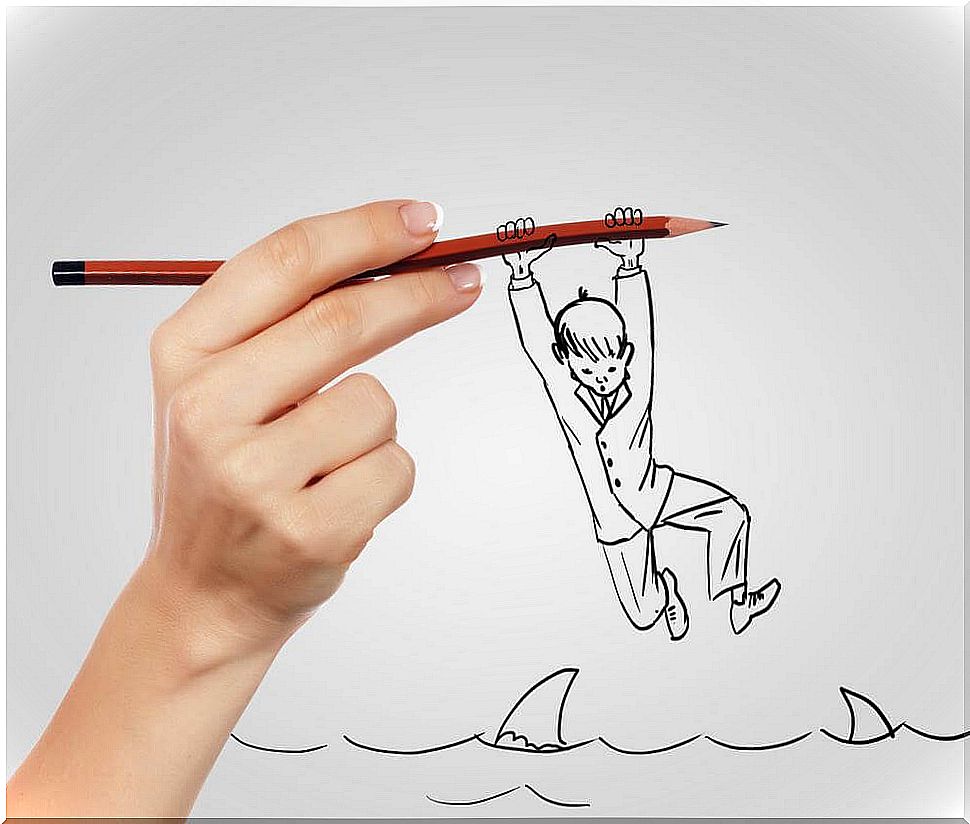Tell Me What You Draw And I’ll Tell You Who You Are

When it comes to personality, there is nothing new under the sun. For this reason, any behavior, whether it is the tone of voice, the way we walk or draw, expresses our way of being, whether we want it or not.
This principle, which psychologists know well, is the basis of projective tests, designed in such a way as to make us reveal our personality without realizing it. Thus, the different tests of drawings, such as that of the human figure, of the tree or of the house, are projective tests with which our (apparently innocent) drawings reveal our innermost secrets.
What are projective tests?
Projective tests are a very interesting area of psychology because of the discovery process they trigger from a stimulus as ambiguous as a drawing. However, projective tests consist precisely in this: they are situations that allow the subject to express himself freely, without conscious controls, so that his tensions, conflicts, emotions and attitudes, as well as his creative and constructive sides emerge without restrictions. A real feast for psychologists!
Our dramas in the drawings
The substratum from which the psychological meaning of the tests is extracted is constituted by the psychodynamic theories of personality or theories of the “psyche in motion”. They are called this because they are based on the interaction that exists between the different aspects of the personality such as the instincts (the id), the reason (the superego) and the functional or adult aspect of the personality (the ego). These recreate between themselves real novel situations that develop in our unconscious and that significantly affect our conduct. These dramas manifest themselves in projective tests, particularly in drawings, not only through the content, but also through every conceivable possible detail.
Every detail counts
The interpretation of the texts of the drawings or graphic projective tests has two phases: the detailed analysis of each aspect of the drawing and the synthesis and integration of all these aspects to arrive at a dynamic conclusion regarding the psychological situation of the person.
In the detailed analysis, all the indicators of the figure drawn are considered one by one , among which we find:
– the sequence. It indicates what the priorities of the subject are and what he identifies with and what he rejects.
– the size. It has to do with introversion and extroversion, as well as the ability to control impulses.
– the position and orientation in the sheet. It is associated with impulsiveness and emotional control, as well as with the level of self-confidence.
– the pressure, thickness and firmness of the line. They are linked to assertiveness or shyness, security or insecurity.
– symmetry. It is related to the degree of emotional control.
– the absence or excess of details. It is associated with certain risks such as depression and narcissism.
It is very important to clarify that the presence of some of these indicators does not automatically imply a psychological link. The expert must integrate not only the set of indicators present in the test, but also other data sources such as observation, interview and history of the person in order to arrive at a summary on his mental profile.
We briefly immersed ourselves in the fascinating world of graphic projective tests, where the white sheet that the psychologist gives us is like a cinema screen in which we project the film of our psyche with all the intensity of its dramas.









